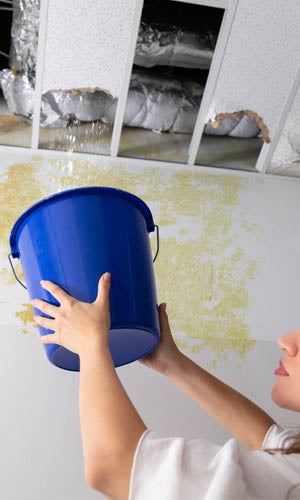The article down below pertaining to Top leak detection hacks is absolutely stimulating. Don't skip it.

Early discovery of leaking water lines can alleviate a prospective disaster. In addition to conserving you cash, it will certainly reduce the aggravation and also frustration. The minute you find a leakage, calling your plumber for repairs is the very best remedy. Some small water leakages may not be noticeable. Here are some hacks that aid if you can not identify it with your nude eyes.
1. Take A Look At the Water Meter
Every home has a water meter. Checking it is a surefire way that assists you find leakages. For beginners, shut off all the water resources. Ensure nobody will purge, use the faucet, shower, run the cleaning equipment or dishwashing machine. From there, go to the meter and watch if it will certainly transform. Considering that no person is using it, there ought to be no movements. That suggests a fast-moving leak if it moves. Furthermore, if you find no changes, wait an hour or two and inspect back again. This implies you may have a sluggish leak that can even be below ground.
2. Examine Water Usage
If you identify sudden changes, in spite of your intake being the very same, it implies that you have leakages in your plumbing system. A sudden spike in your costs indicates a fast-moving leak.
Meanwhile, a constant boost each month, despite the exact same habits, shows you have a slow leak that's additionally gradually rising. Call a plumber to thoroughly check your building, particularly if you feel a cozy location on your floor with piping below.
3. Do a Food Coloring Examination
When it comes to water consumption, 30% comes from toilets. If the color in some way infiltrates your dish throughout that time without flushing, there's a leak in between the container as well as dish.
4. Asses Exterior Lines
Don't forget to examine your exterior water lines as well. Should water leak out of the connection, you have a loosened rubber gasket. One tiny leakage can throw away bunches of water and increase your water bill.
5. Examine the situation and evaluate
House owners should make it a routine to examine under the sink counters and even inside cabinets for any kind of bad odor or mold development. These two red flags show a leak so timely interest is required. Doing routine inspections, also bi-annually, can save you from a significant trouble.
If you understand your home is currently old, maintain a watchful eye on your heaters, hoses, pipes and so on. Look for discolorations and also weakening as most home appliances and also pipes have a life expectancy. They will also naturally wear away due to tear and wear. Do not wait for it to escalate if you think leaking water lines in your plumbing system. Call a specialist plumber immediately so you don't end up with a terrible mess in your home.
Early detection of leaking water lines can minimize a potential disaster. Some tiny water leaks might not be noticeable. Inspecting it is a surefire way that helps you find leaks. One tiny leakage can squander bunches of water and also surge your water costs.
If you suspect dripping water lines in your plumbing system, do not wait for it to escalate.
WARNING SIGNS OF WATER LEAKAGE BEHIND THE WALL
PERSISTENT MUSTY ODORS
As water slowly drips from a leaky pipe inside the wall, flooring and sheetrock stay damp and develop an odor similar to wet cardboard. It generates a musty smell that can help you find hidden leaks.
MOLD IN UNUSUAL AREAS
Mold usually grows in wet areas like kitchens, baths and laundry rooms. If you spot the stuff on walls or baseboards in other rooms of the house, it’s a good indicator of undetected water leaks.
STAINS THAT GROW
When mold thrives around a leaky pipe, it sometimes takes hold on the inside surface of the affected wall. A growing stain on otherwise clean sheetrock is often your sign of a hidden plumbing problem.
PEELING OR BUBBLING WALLPAPER / PAINT
This clue is easy to miss in rooms that don’t get much use. When you see wallpaper separating along seams or paint bubbling or flaking off the wall, blame sheetrock that stays wet because of an undetected leak.
BUCKLED CEILINGS AND STAINED FLOORS
If ceilings or floors in bathrooms, kitchens or laundry areas develop structural problems, don’t rule out constant damp inside the walls. Wet sheetrock can affect adjacent framing, flooring and ceilings.
https://www.servicemasterbyzaba.com/blog/how-to-detect-water-leakage-in-walls/

As an enthusiastic reader about Detecting hidden plumbing leaks, I was thinking sharing that piece of content was a good idea. Enjoyed reading our blog entry? Please share it. Let other people discover it. I praise you for your time. Don't forget to stop by our website back soon.
Comments on “Guide To Water Leak Detection At Home”